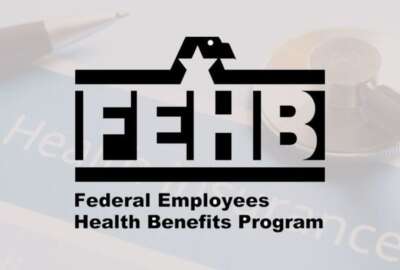Survey: PIOs slowly creating a performance culture
An exclusive Federal News Radio online survey of federal PIOs finds agencies are using performance to improve their missions, but more than half of the Performa...
Performance management has taken hold at most agencies, but most performance improvement officers still wear multiple hats.
An exclusive online survey of federal PIOs by Federal News Radio finds 57 percent of the respondents said their full-time job at their agency is not actually managing performance. But most respondents also said they have strong support from their superiors and their agency is committed culturally to improve performance.
“This is not just being driven by OMB, but it is really being owned by the agencies,” said Shelley Metzenbaum, the Office of Management and Budget’s associate director for performance and personnel, during a discussion of the survey on In-Depth with Francis Rose. “We are seeing much more success than we had two or three years ago. We are trying to find success and spread success.” 
Metzenbaum said this was one of the few times PIOs have ever been surveyed. She said there are some interesting themes that emerged from the responses.
“The people who responded to the survey are saying they are seeing things change at their organizations,” she said. “There really is an evolving culture of performance improvement where agencies are trying to accomplish more mission for the money. They are recognizing the power of goals and measurement to accomplish their objective and not just report it in a compliance-oriented way, but use it to figure out what’s working so they can do more of it and what’s not working so they need to dig into the data and understand the causes.”
Several drivers toward better performance
Metzenbaum said there are a number of factors driving the move toward using performance to impact programs. First, she said getting agency leaders to identify their top priorities and goals they could accomplish without any new money or resources. Second, she said, agencies are recognizing data is a tool, which can be used externally and internally.
The survey results back her up — 71 percent of the respondents strongly agreed with the statement that they have the support of their superiors to improve performance. All respondents either strongly agreed or somewhat agreed that their agency was committed culturally to improving performance.
Respondents said resources — both people and funding — are the biggest inhibitors to improving performance at their agencies.
Metzenbaum said the key is to figure out what PIOs are really asking for when they request more resources.
“We are trying to say, ‘what actually do you need? Is there a skill set you need? Is there a particular type of information you need?'” she said. “It’s not really more or less resources. I think that is what this whole performance improvement effort is figuring out … what are the questions you need to ask?”
Metzenbaum said one big question that remains is how do PIOs make the measures useful for field employees and what models exist that can be replicated?
“None of them are coming to me and saying we need more money,” she said. “They’re saying what’s important is that leadership cares. We feel like we’ve made a big difference there. We want to figure out: How do we help people across the federal government, not just in the PIO shop, figure out how to deliver more with constrained resources?”
PIC helping make connections
Respondents also said the Performance Improvement Council (PIC) is making a difference at several levels, including giving PIOs a chance to learn from others and share their experience. More than half of all respondents did not have an opinion, however, about Performance.gov and whether it will make a difference, saying it’s too early to tell. One respondent wrote, “It’s not transparent enough at present.”
Along with the PIC, 57 percent of the PIOs said the quarterly reviews of their agency’s high-priority goals are making a difference in how their agency works.
Metzenbaum said when agencies get data more frequently, they can make better decisions.
“We really want actionable information, and it’s data that you’re looking for — variations and patterns. Are things different than you would have expected?” she said. “When you see that, you want that difference to trigger a very simple question, why? We are seeing that happen in agencies.”
OMB told agencies to set goals, measure frequently and get the right people in the room to analyze the data and make decisions.
“The challenge is to figure out what is the question we are trying to ask. You want to start with a really clear goal,” Metzenbaum said. “It’s going in and looking and analyzing the data to see what are the positive outliers. You still have to ask why. Is it on a sustained basis? If so, why? It’s really first figuring out the questions and what you are trying to accomplish?”
Metzenbaum said the goal of the performance reviews is to free up federal employees from the processes and instead ask questions about how they accomplish their agency’s mission.
Respondents also were given a chance to offer comments directly to OMB, their agency’s senior managers and to offer insight into their everyday support of performance management.
OMB needs to coordinate better
To OMB, several encouraged better integration of performance both across their agency and across government.
“Encourage integration as much as possible of performance efforts with budget, finance and acquisition — all these areas work together to support mission delivery and are key aspects of managing agencies,” commented one PIO.
Others wanted OMB to be more involved.
“Reduce the number of initiatives and focus on a few where OMB can provide value (e.g., analysis. resources, tools) to improve performance,” wrote one respondent.
Another said OMB should “work with agency heads to help them learn how to manage with data. Have a performance council for agency heads to learn from each other.”
Several PIOs also expressed the benefits of relying on data and communicating with frontline employees about how to improve programs.
“The development and use of performance information is not just about accountability, it is also about empowering line offices to align their efforts with the agency’s priorities,” commented one PIO.
RELATED STORIES:
OMB finally launches Performance.gov portal
OMB asks agencies for self-assessments
GAO: How to enhance agency performance under GPRA
PIOs stretched too thin, lack authority to affect change
Copyright © 2024 Federal News Network. All rights reserved. This website is not intended for users located within the European Economic Area.
Jason Miller is executive editor of Federal News Network and directs news coverage on the people, policy and programs of the federal government.
Follow @jmillerWFED







